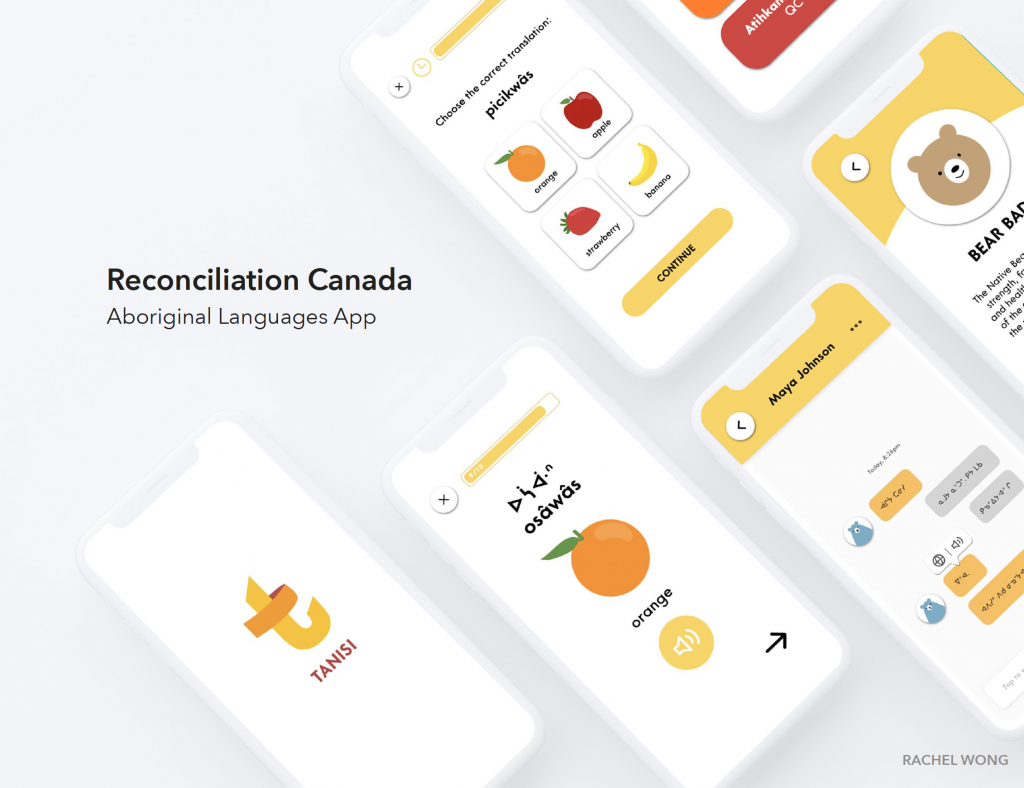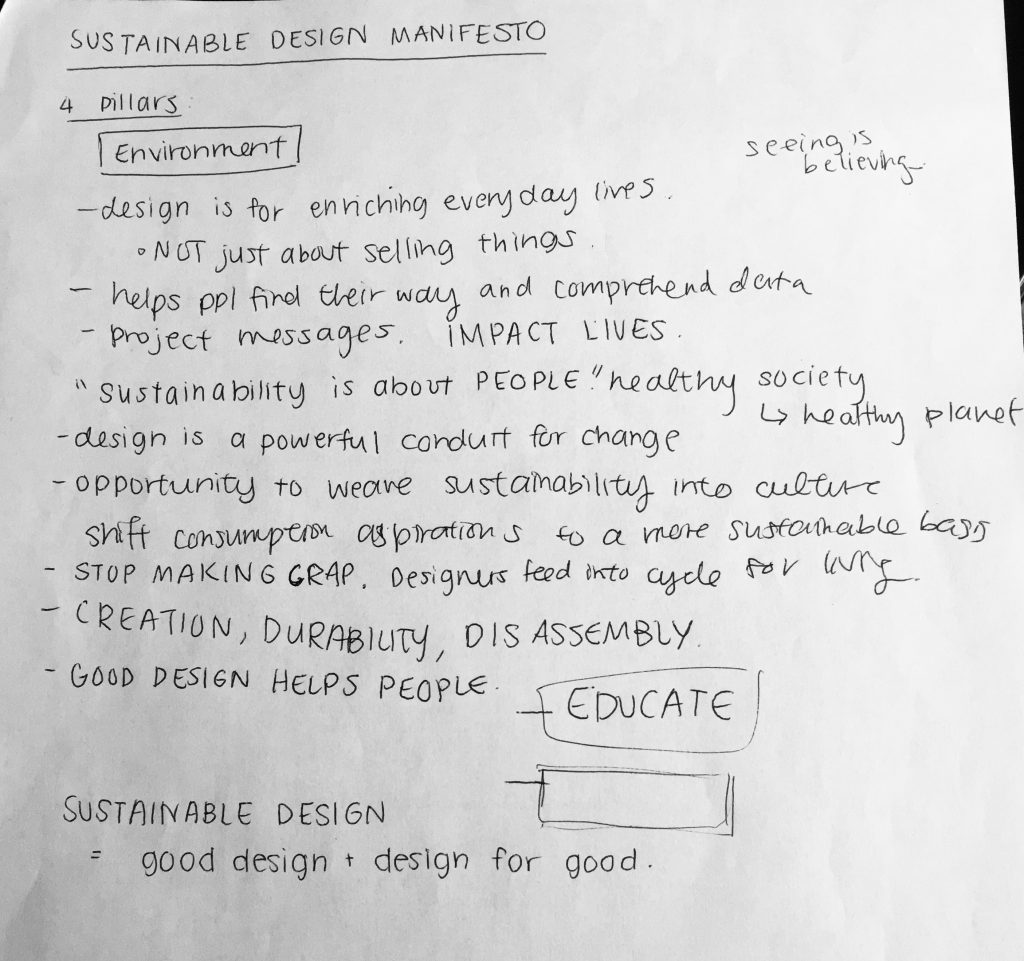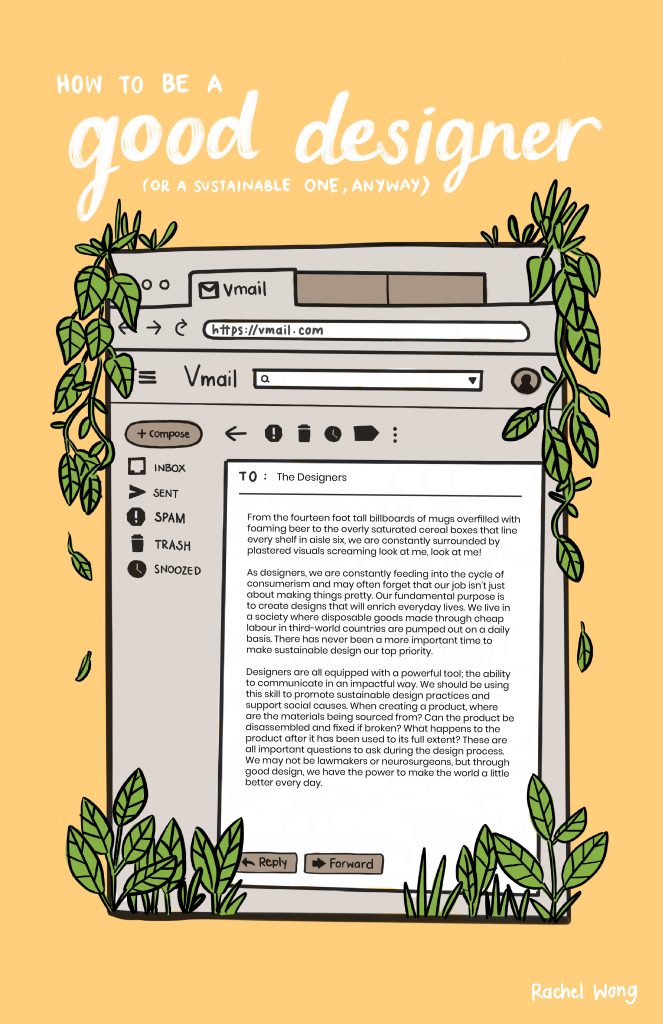
This project really gave me a new perspective on the issues that Indigenous peoples suffer from and the importance of reconciliation in Canada. I decided to focus on the revival of First Nations languages in Canada, after reading about how all 32 of the surviving languages in BC alone are currently endangered. During my research process, I realized that there were not an immense about of resources for people to learn Aboriginal languages, and all the apps that were available looked outdated and were not engaging due to poor design. I wanted to create an app that would help teach Aboriginal youth their native language and make the process fun and interactive.
In week 8, we had the opportunity to present our ideas to the Indigenous film students at Capilano. It was such a great experience getting to talk to and hear the struggles they had in-person. I received very useful feedback on my project from students Justin Leo and John Spink. Originally, I had wanted to create this app for two target audiences: one being Aboriginal youth, and the second being the general public. I thought, by getting other non-Aboriginals to learn as well, there would be a greater population speaking the languages. My second deliverable was billboard advertisements that would spark an interest to the general public to learn an Aboriginal language. However, Justin told me that some Aboriginals would not want other people learning their native language, especially before the Aboriginal youth. He told me that it is more important to get the app to the Aboriginal youth first, before considering (and also asking permission from the Elders) to release the app and encourage others to learn the language.
I named my app “Tanisi”, which means “Hello” in Cree. The interface is friendly and easy to use, with a happy yellow colour theme that is inviting and visually exciting. You can learn three languages in the app – Cree, Squamish, and Chilcotin. I decided to focus on Cree, as there were much more resources online for me to source from. Tanisi has many unique features to aid the user’s learning experience. When learning a new word, you can record yourself saying the word and compare your voice as well as the soundwave shape to a native speaker pronouncing the same word. This helps with learning tone fluctuations and accents. There is also a “chat” feature, where you can communicate with friends in Cree. You can hold a message and hear it pronounced or have it translated. This helps you practice communicating in real-life conversation. There is also a “challenge” section, where you can race against the clock with friends to translate words and sentences as fast as possible. This makes the learning process fun, especially for youth. You can earn badges in the app as well. Each badge symbol will have a description of what that symbol means in a specific Aboriginal culture. The badge system encourages users to keep using the app and acts as a reward system.
Overall, I am really proud of the work I have done for this project and I would give myself a 9/10 as I put a lot of effort into designing and creating the app to make it appealing and useful for my target audience. I also believe this app would be a very useful tool in aiding the revival and sustenance of Aboriginal languages. I didn’t want to just make “another language learning app”. Instead, I wanted to create an app that had many unique and useful resources to make the learning experience as easy and entertaining as possible.
The whole app is also uploaded onto Invision with hotspots for a clickable, interactive experience:
View the full PDF for this project here:


